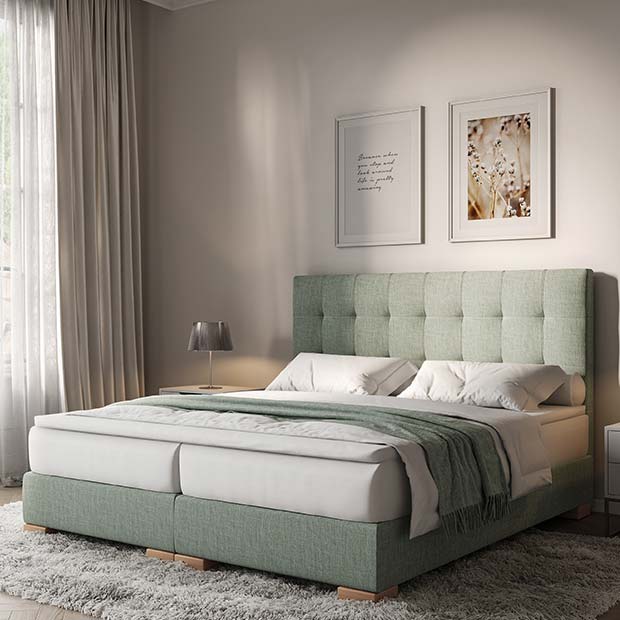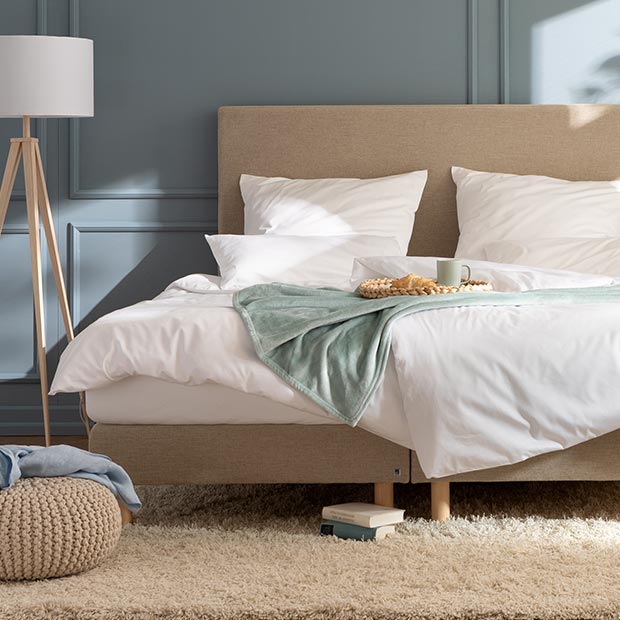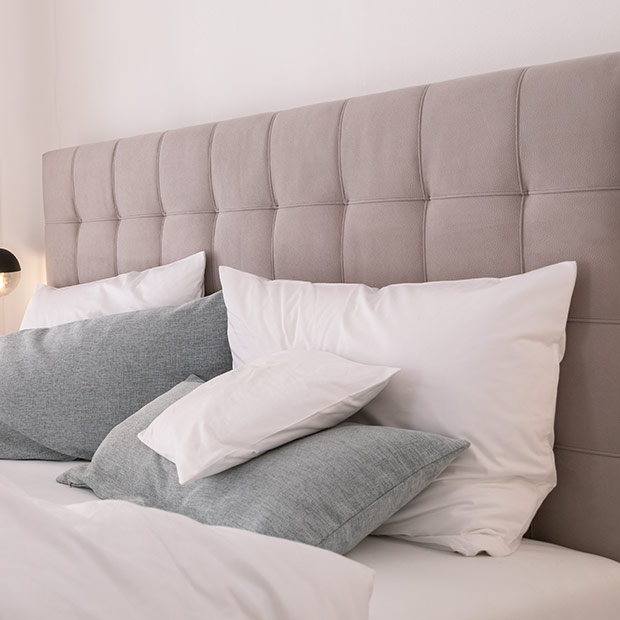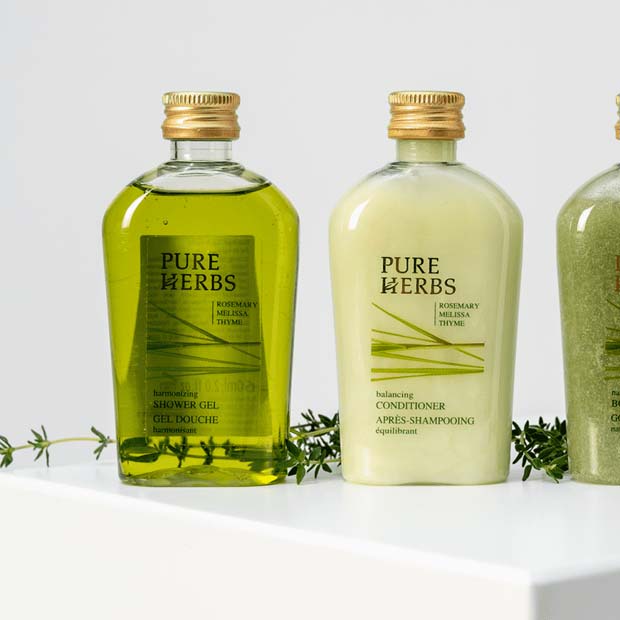27/11/2022
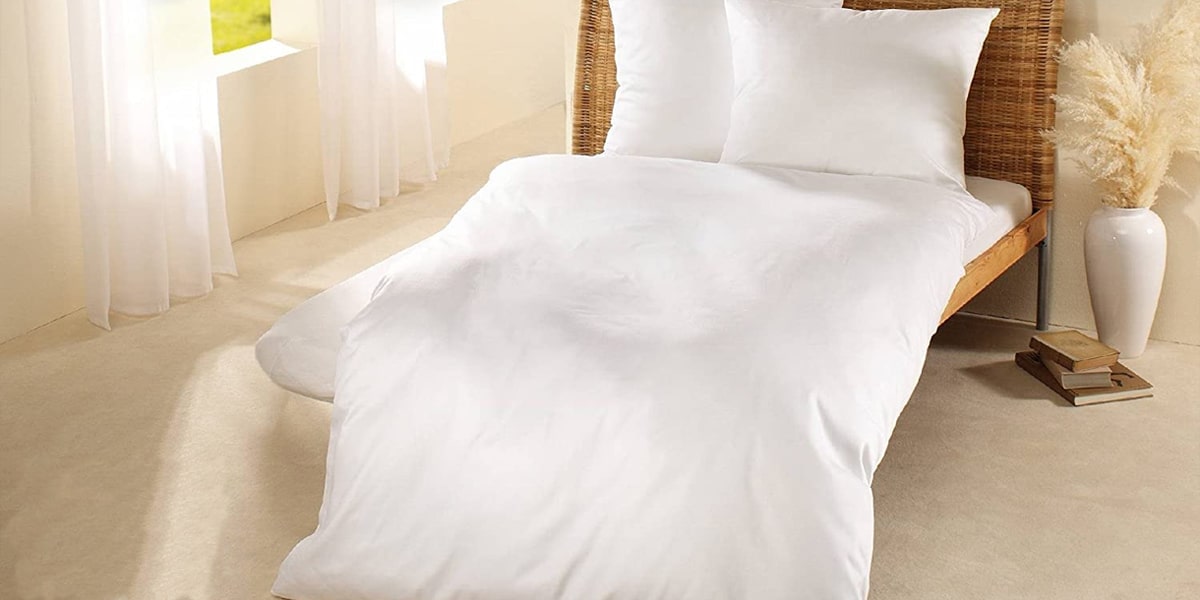
Organic bed linen - how sustainable is it really?
Table of Contents
Organic Bedding
In this article, you will learn what organic bedding actually means, which certifications are applicable, and which fabrics are the most skin-friendly.
What Does “Organic” Mean for Bedding?
Organic in bedding generally stands for "biological" and means that the product is made with ecological raw materials and has not been treated with chemicals or other non-sustainable methods.
For more than a year now, there has finally been a state textile certification with clear guidelines, the Grüner-Knopf (Green Button).
Previously, the textile sector agreed on certifications issued by private organizations and associations. This has now changed with the certification initiated by the Federal Ministry for Economic Cooperation and Development (BMZ). More about this can be found below.
This blog post will explain under what conditions this new certification is awarded, especially in relation to bedding, whether it is effective, and how other organizations and associations award certifications.
The business of organic bedding or organic textiles is booming, as you can see from the graph directly below this paragraph. It is therefore all the more important to differentiate between what is truly organic and what is greenwashing.
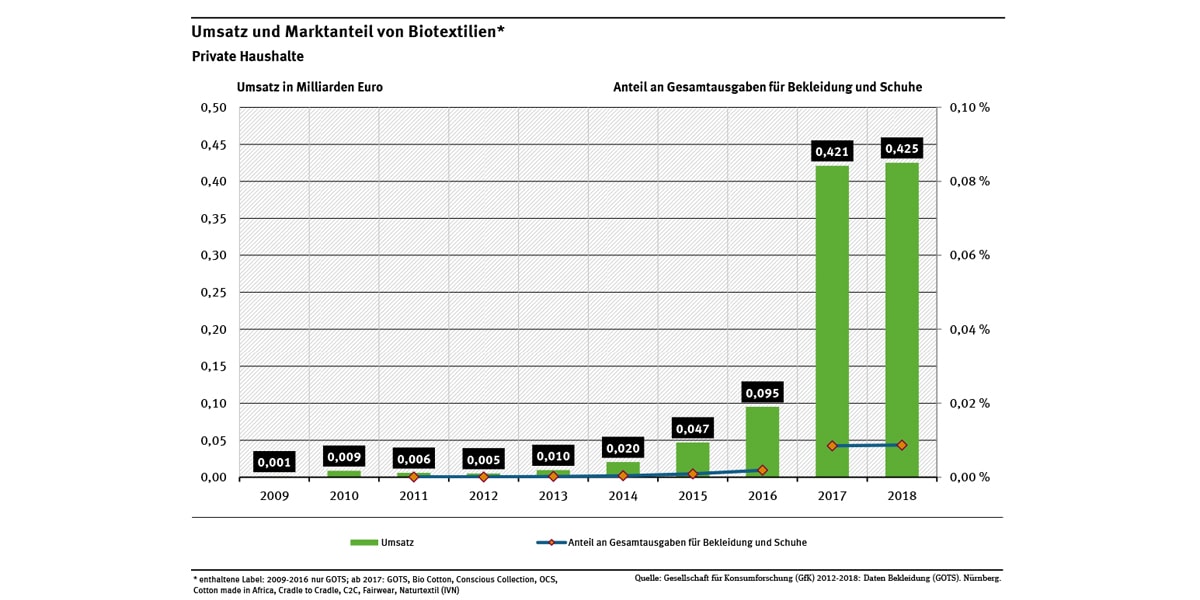
Source: Federal Environment Agency
The Meaning of Organic
Organic should not only mean that sustainable raw materials are used in the production of, for example, bedding, but also that the entire company takes on human rights, social, and ecological responsibility.
A certification for textiles should also include environmental protection, a traceable supply chain, transparency towards you as a customer, and a transparent complaint mechanism that applies not only internally for workers but also for you as a customer, and not just a green glowing and good-looking logo.
Certifications with these exact focuses, i.e., with really high standards when it comes to organic (bedding), have been listed and differentiated here for you so that you can clearly see when you are being driven to purchase through marketing and when the environment and much more are truly considered.
1. Grüner-Knopf (Green Button)
Ranked first is the "Grüner Knopf" certification initiated by the Federal Ministry for Economic Cooperation and Development (BMZ). This is not only a state certification with very high requirements but also transparent demands and expectations for manufacturers.
What stands out particularly positively here is the transparency that companies are required to maintain. They must report to their customers in writing once a year, hopefully soon to you, transparently, honestly, and openly about how they deal with risks and impacts of their own business activities.
Another plus is that if the certified company causes damage to people or nature for any reason, they must provide remedy and compensation, thus truly taking responsibility.
If you want to read the list of all requirements in detail, you can do so on the Grüner Knopf Criteria Page, as terms like "environmental protection" actually have clearly defined and good standards such as wastewater limit values.
If you want to buy organic bedding and see the Grüner-Knopf certification associated with the product, you can shop with peace of mind.
2. GOTS - Global Organic Textile Standard
The GOTS certification, like the Green Button, stands not only for environmental requirements regarding the textile production chain but also has social conditions that must be met.
The standard requirements for production cover manufacturing, making up, packaging, labeling, trading, and distribution. The social criteria include that all processors and manufacturers must meet the core norms of the International Labour Organization.
A certification that, like the Green Button, has very high standards for awarding the certification, thus ranking second.
3. Fairtrade Textile Production
The Fairtrade certification for the textile industry ranks third after the Green Button and GOTS, with relatively high standards.
Clear criteria are specified for each stage of the entire supply chain, but the implementation of living wages is also part of the certification.
Therefore, anyone who buys bedding with the Fairtrade Textile Production certification can definitely expect a certain quality and fair trade.
However, if the option to buy bedding or textile products with the Green Button certification is available, you should prefer it, as they conduct stricter controls and work more transparently.
4. OEKO-TEX
It is particularly important to distinguish between the two most widely spread OEKO-TEX certifications. Firstly, the probably most well-known OEKO-TEX Standard 100 certification and then the OEKO-TEX Made in Green.
The Standard 100 certification only ensures that the textiles have been tested for harmful substances, but social, economic, and ecological values are not checked and controlled here.
It is different with the OEKO-TEX Made in Green certification, which is a bundle of three certifications, including the Standard 100 certification. Here, materials are not only tested for harmful substances but also for their sustainability, social working conditions, and transparent supply chains.
Buying Organic Bedding
Hotelshop
More and more hotels are also trusting in sustainable bedding, which is why we at Hotelshop also offer exclusive and sustainable hotel-quality bedding in our range.
We especially recommend organic bedding because it is not only equipped with good certifications but also transparently shows on their website how the textile products start with small farmers and eventually end up in your bedroom.
What Organic Fabrics Are Available?
This is not a complete list of all the organic bedding fabrics available, but it briefly explains the most common and relevant ones.
Organic Cotton Bedding
The natural fiber cotton is very soft, durable, skin-friendly, and breathable. Perfect for bedding, but of course also for any other type of textile product.
Because these properties are so ideal, cotton is correspondingly popular, and everything is done to make it even cheaper and more efficient to grow and harvest.
Therefore, it has become increasingly important to look for good textile certifications that not only prohibit the use of pesticides but also provide reasonable wages for local residents.
Renforce
Renforce is a common weaving method for cotton fabrics. The resulting Renforce fabric is smooth, skin-friendly, and temperature-balancing, properties that are ideal for bedding, which is why organic Renforce bedding is also so popular.
Jersey
Organic jersey bedding is usually made from cotton mixed with elastane or viscose, making it stretchy and elastic. Since jersey is very easy to care for, pleasantly soft, smooth, breathable, and absorbent, it is not only used for making bedding but also for clothing or partially for decorative fabrics.
Satin and Mako-Satin
Satin is known for its shine, elegant appearance, and ease of care. Satin itself is not a material but merely the type of weave. It can be made from viscose, polyester, silk, and also cotton.
Silk satin is the highest quality type of satin and is therefore the most expensive.
The most popular for bedding is cotton satin, as it has a smooth and shiny surface and is also breathable and moisture-regulating . Organic cotton satin bedding is thus one of the most elegant bedding variants you can buy.
Organic Mako-satin bedding differs in the origin of the cotton, as Egyptian cotton is used here.
Biber or Flannel
Biber fabric is usually made from cotton and is known for its thick, dense, and fluffy consistency. Ideal for winter bedding, as organic Biber bedding retains warmth and provides a warming feeling.
Flannel is also perfect for organic winter bedding as this fabric retains heat very well. Flannel is also elastic, durable, and still has a certain softness. Originally, flannel was used for shirts and men's suits, but the bedding industry has discovered its excellent properties and started making bedding from it.
Flannel is also usually made from wool or cotton.
Lyocell
Lyocell is a semi-synthetic fiber obtained from wood. The manufacturing process of Lyocell is environmentally friendly, as it occurs in a closed loop where the used solvent is almost completely reused.
Lyocell bedding is characterized by its exceptional softness and silky sheen. It is particularly breathable and moisture-regulating, creating a pleasant sleeping climate.
Additionally, Lyocell is hypoallergenic and therefore highly suitable for allergy sufferers.
What Is the Difference Between Regular and Hotel Bedding?
We at Hotelshop specialize in hotel products, so we naturally want to explain the differences between hotel bedding and regular bedding.
The Closure
Hotel bedding does not have a regular button or zipper closure; instead, the open end is folded inward and sewn along the edge. This fold keeps the bedding in the cover, but the significant advantage is the quick change. Bedding with hotel closure can be changed much faster than conventional bedding.
Of course, we also offer bedding with regular button or zipper closures. Information about the individual products can be found in the product description.
The Design or Pattern
Hotel bedding almost always has a neutral white design, often with stripe satin that creates the stripe pattern. However, generally, the majority of the hotel industry uses white bedding.
Durability
Bedding used in hotels must naturally be changed and washed much more frequently, which is why hotel bedding is expected to have higher durability.
How to Wash Organic Bedding?
In general, it is always advisable to follow the label on the bedding itself. However, organic bedding can usually be treated almost the same as conventional bedding, meaning washing at 60°C.
It is also advisable to turn the bedding inside out before washing to prevent lint from accumulating in the corners.
Can Organic Bedding Go in the Dryer?
Bedding made from natural fibers can generally always go in the dryer. It should take about 1.5 hours to get the bedding closet dry. Note that the higher the spin speed when washing, the less moisture remains, so you may need to dry it for a shorter time.
If you want to save electricity and do something good for the environment, avoid using the dryer, as it consumes an above-average amount of energy. Bedding also dries wonderfully on a drying rack, even if not in 1.5 hours.
Conclusion: Sleep Better with Organic Bedding
If you want to sleep not only with a better conscience but also with fewer potential harmful substances, you should definitely choose organic bedding. Due to high demand, there is now a very wide selection, and more and more large "mainstream" textile manufacturers are offering products with correspondingly good certifications.
```

